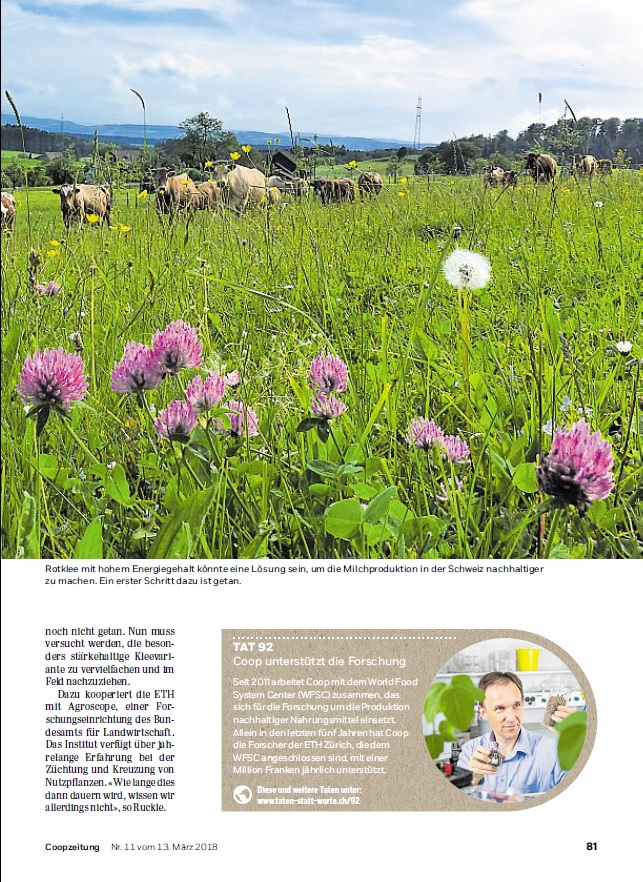Searching for a high energy clover
The research of Mike Ruckle, a postdoctoral fellow in the Molecular Plant Breeding group of Prof. Bruno Studer, is featured in an article in the Coop Magazine this week. The HERC project aims to make sustainable pastures and grasslands more economically feasible by breeding a red clover variety with a higher energy content.

Red clover grows is often seen growing on meadows, and the small plant has great potential to contribute sustainable agriculture. The project “Advanced breeding of high energy red clover for sustainable ruminant livestock production,” led by WFSC member Prof. Bruno Studer, is profiled in a recent edition of the Coop Magazine (Nr. 11 /2018).
The article includes an interview with postdoctoral researcher Mike Ruckle; he mentions that he has wondered since boyhood why grass and clover are not enough to enough to feed livestock. The key is that these forage crops lack the fermentable, high-energy carbohydrates required to meet the productivity potential of modern livestock breeds; therefore, forage-based diets are supplemented with high-energy corn, cereals, and soy that are often derived from unsustainable monoculture based production and foreign supply chains.
Mike’s research led to the discovery of red clover varieties with higher starch content, the growth of which now need to be tested in the field.
The project is funded by the World Food System Center Research Programs, under the Coop Research Program for Sustainability in Food Value Chains.
Read the article external pageherecall_made (in German) and for more on the HERC project, visit the project website.
